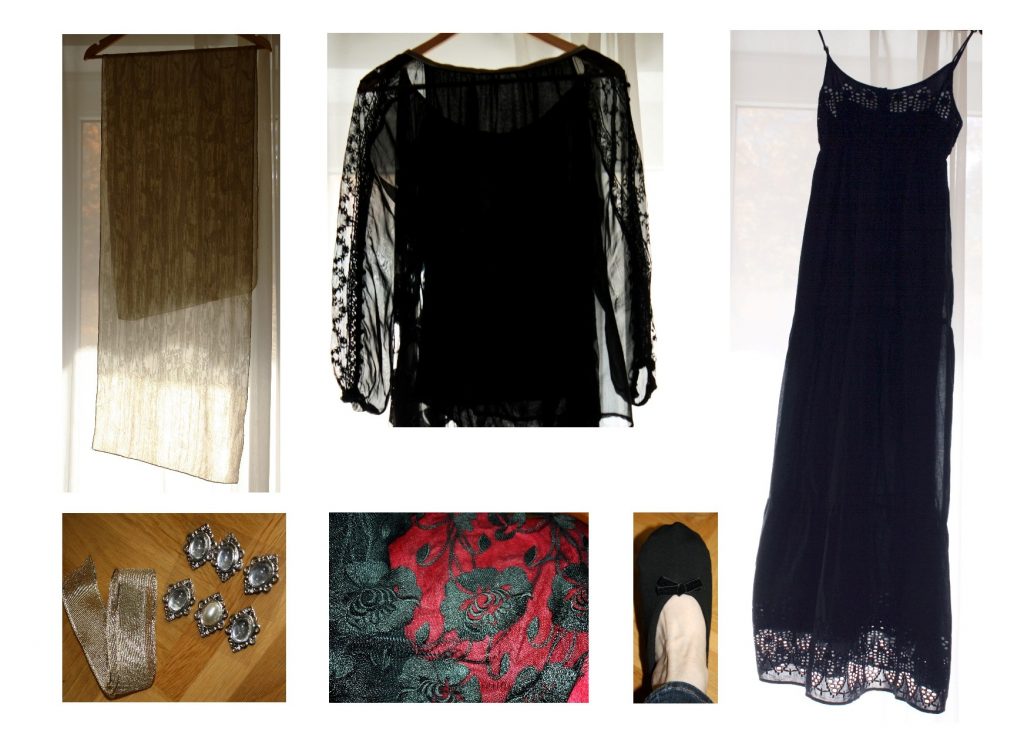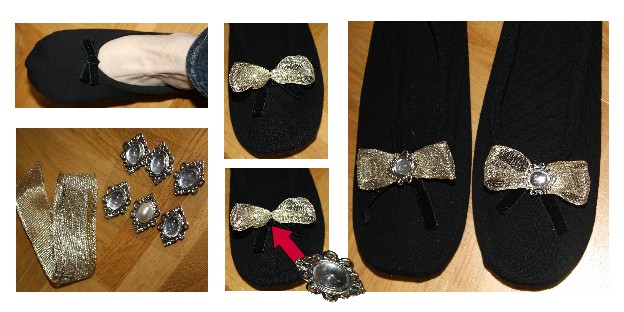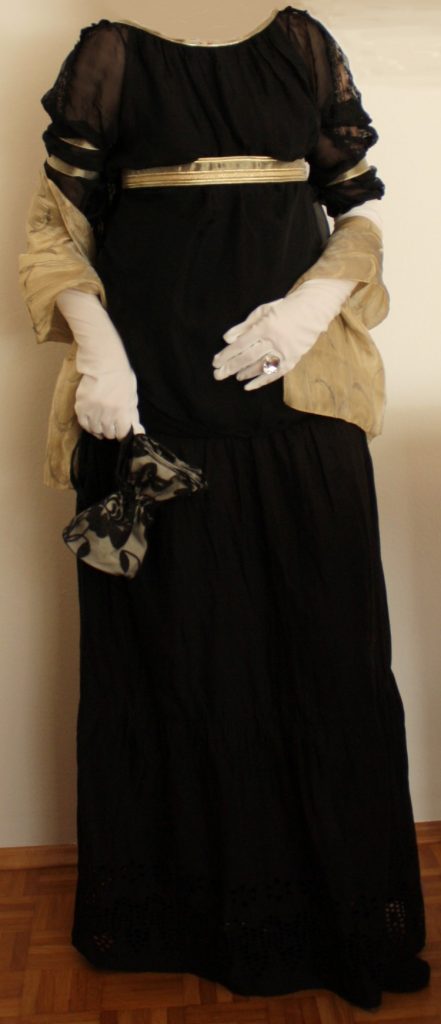Going to a ball set in Regency England is a great thing. There is however one minor problem: you can’t go there wearing jeans. So a ball gown it must be. But what if you can’t sew, can’t spent a lot of money or hyperventile at the sight of a sewing pattern (like I do)? Here is your solution: Don’t sew, but assemble your ball gown.
You need:
- Your cupboard: Browse it for anything that can be turned into a ball gown. You will be surprised at how much you can use.
- Ribbons for decorating presents. There are always some leftovers from last year’s Christmas
- Your toolbox for creative odds and ends OR a shop for creative supply
- A fleamarket
Before you rush into action, think for a minute what matters in ball gown fashion in 1820:
- The gowns have a high waist
- A train is the dernier crie (the longer, the better)
- You always have to wear gloves at a ball
- Shoes for a ball were made of satin or silk
- A head-dress of feathers is a sign of wealth and taste
As you will use modern clothes and some odds and ends, there is only a small chance your ball gown will win the “Most Historically Correct Regency Costume Award”. But it will be correct enough. Plus: you won’t have to spend a lot of money on it.Plus: you won’t have to sew (not much, at least).
This was my starter kit for assenbling a ball gown:
- A long cotton beach dress
- A gold-coloured scarf from I-don’t-now-when, never worn (for good reasons)
- A layered blouse with lace sleeves (summer sale)
- Christmas ribbons and fake decorative gems
- Black lace (found at sale in the textile department. Big hit!)
- A discared business shirt
- A fake diamond necklace (fleat market)
- Three large white feathers (shop for creative supply)
- Cheap cotton slippers (supermarket)
- Gloves (shop for fancy dress costume)
Each single piece does not seem to fit well for a ball gown. But used wisely, it won’t turn out too badly.
There is one thing I have to admit here: my best friend kindly agreed to turn the black lace into a train, to sew the train to the blouse and to prepare the golden ribbons. This was a huge relief. She also made the cute reticule from the leftover lace and a discarded businesse shirt of her husband.
But please note it was I who turned the dowdy slippers into ball shoes (at the risk of my live but without loosing much blood;-) ).
Voilà, this is my ball gown for 1820:
Enjoy assembling your own ball gown!



